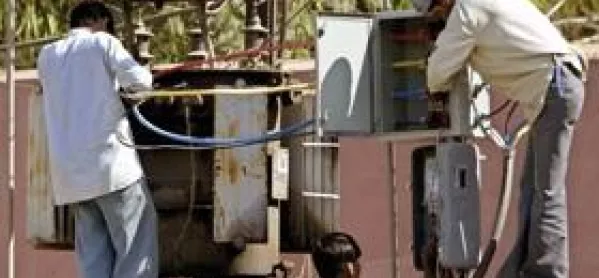‘Vocational education can give people a life of dignity’

An emphasis on academic achievement is well established in India, with many parents desperate for their children to attend university and gain employment in a white-collar profession. But the country is paying the price for neglecting “less glamorous” vocational education, with many industries suffering from a shortage of skilled workers, experts have warned.
Now the Indian government is trying to turn things around by launching a major campaign to promote skills training and attract young people to vocational courses. It is aiming to train a staggering 500 million people by 2022, and as a start has set aside 10 billion rupees (pound;118 million) in the 2013-14 budget. It will give 1 million students 10,000 rupees (pound;118) each as an incentive to pursue skills training.
A survey launched to gauge the public perception of skills training in five key areas of the country will report back in June, and an advertising campaign will be rolled out in July. “Vocational education suffers from a poor perception problem. It is considered second to the formal education stream. This campaign will try to change that,” said a spokesman for the National Skill Development Corporation, which is overseeing the initiative.
The move to popularise vocational education comes as dozens of colleges based in England seek to open permanent campuses in India in an attempt to cash in on the growing demand. They are being joined by institutions from the US, Canada, Australia, New Zealand and Germany.
Goutam Roy of Future Group, an Indian organisation that has linked up with the corporation to train 7 million people by 2022, said: “In India, education is perceived as what is taught in the classrooms of traditional schools and colleges, and training in specific skills is not considered an educational discipline.
“The campaign will target the qualified unemployed in urban India and not- eligible (unqualified) candidates in rural areas. The effort is to tell people that vocational education can give them a life of dignity.”
But Adrian Mutton, chief executive of Sannam S4, a company that helps educational institutions to enter the Indian market, said that trying to change Indian society’s perception of vocational education would be difficult. “There’s a robotic fixation among parents to have their children go into higher education and a genuine apathy towards participating in vocational education,” he said.
Mr Mutton, who has advised both the British and Indian governments, said that the roots of the problem are in India’s caste system and the expectation that certain classes of people will go into certain trades or professions.
“When it comes to encouraging young people to undertake vocational training, the natural position of many Indian parents is that they don’t want their children to be plumbers or electricians because those jobs are seen as being for lower-class citizens,” he said.
“The campaign is (a) worthwhile endeavour and a good start, but the government will have to do more if it is to tackle this. India faces an enormous society-wide problem if it doesn’t, because it will have so many people out of work. The economy won’t progress because it won’t have the drivers it needs to improve.”
India’s vocational training sector consists of a mix of government-funded industrial training institutes and a growing private sector. But because there are no agreed national standards for vocational training, it is hard to know whether graduates are skilled enough for work.
This has led to industries complaining of a “severe” shortage of employable workers. The automobile industry is likely to be hit by a shortage of 300,000 skilled workers, according to a 2011 survey, and it is estimated that the pharmaceutical industry will need 2.5 million skilled professionals by 2022 - more than double its current workforce of 1.1 million.
Although the government wants to create an agreed national skills framework, its task is made more difficult by the fact that individual states have their own standards and the private sector is content to do its own thing. The influx of foreign college providers may help to improve standards but they are also not bound by any national education or skills strategy.
The undeveloped nature of vocational education in India means that it is difficult to know how many young people are undertaking training. A World Bank report from 2006 suggested that only 2 per cent of 15- to 29-year- olds were receiving formal training, with another 8 per cent in non-formal training. By contrast, research published this week found that, on average, more than 50 per cent of 14- to 18-year-olds across the European Union do some vocational study (see below).
UNEMPLOYMENT LINK
A report published this week has revealed that the uptake of vocational training for young people in the UK is among the lowest in the European Union.
Just 32 per cent of 14- to 18- year-olds in the UK undertake some vocational study, compared with an EU average of more than 50 per cent.
The figure was 80 per cent in Liechtenstein and more than 70 per cent in Belgium, the Czech Republic, Croatia and Austria.
The report, commissioned by English education charity the Edge Foundation, suggested a link between high levels of youth unemployment and low take-up of vocational courses in the UK.
Photo credit: Reuters
Keep reading for just £1 per month
You've reached your limit of free articles this month. Subscribe for £1 per month for three months and get:
- Unlimited access to all Tes magazine content
- Exclusive subscriber-only stories
- Award-winning email newsletters



